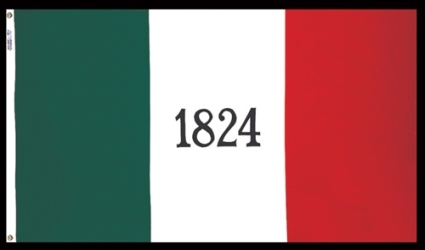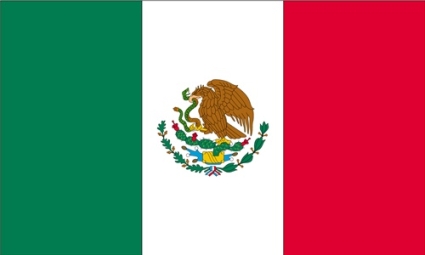The Alamo Flag
The Alamo Flag is fascinating to me. The flag was created by replacing the Eagle in the center of the Mexican tricolor flag with the year “1824,” referencing the 1824 Constitution of Mexico, in support of which the state of Texas was supposedly fighting.

The Alamo Flag.
The Mexican flag or flag of Mexico (in Spanish: “Bandera de Mexico”) has a vertical tricolor (from left to right) of green, white and red with the national coat of arms placed in the center of the flag. Like with some other flags out there, the meaning of the colors of the flag of Mexico have changed over time.
The three colors were initially adopted by Mexico following the independence from the Spain. The current flag was adopted in 1968, but the general design of the flag has been in use since 1821.

The flag of Mexico.
Another interesting note, without the coat of arms on the center of the Mexican flag, the flag of Mexico looks very similar to the flag of Italy.

The flag of Italy.
The Alamo Flag was the very first flag approved for use by forces by a Texan legislative body. In 1835, the Texan government authorized the use of the Alamo Flag for privateers preying on Mexican commerce.
Historic professionals have often said that the “1824 flag” was flown by Texan forces at the Battle of the Alamo. However, this was never declared until 1860, a few decades following the end of the battle.
Various modern writers have pointed out that the presence of the 1824 flag at the time and place of the battle is “highly unlikely.” A similar flag was flown at least briefly by the “Texan Tejano” forces, featuring two black, six pointed stars in place of the date.

The Lone Star And Stripes flag.
It is likely that the actual “Alamo flag” referred to by records of that time period, was the “Lone Star and Stripes,” which had been depicted in use at earlier battles such as “Goliad,” and was widely referred to as the “Texian flag.”
